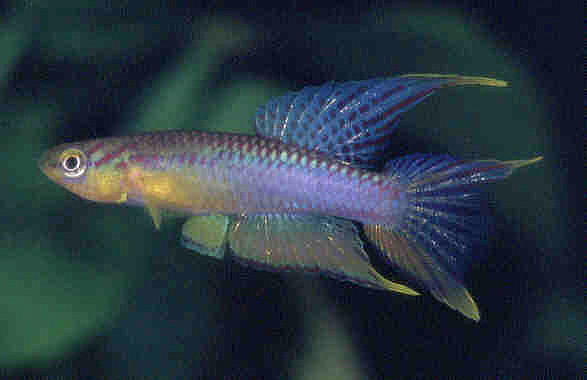| Meaning
of Name |
Refers
to the shining sides of the body. |
| First
Description |
Brünning
C. 1929.
Der grüne Leuchtaugenfisch und
der afrikanische Glanzkärpfling.
Wochenschrift
für Aquarien und Terrarienkunde 26 (23): p 356, figure. Meinken's
re-description.- Meinken H.1930.
Zwei
neue Fundulopanchax-Arten aus Kamerun.
Wochen. Aquar. Terr. Kunde 27, 2 : 17-20 (p 17). |
| Size |
5.5 cm |
| Meristics |
- D = 11, A = 13, ll = 26-27 (Meinken re-description
1930)
- D = 10-13, A = 12-15, D/A = +1-2, ll
= 25-28 (Radda & Pürzl 1987)
|
| Karyotype |
n = 17-19, A = 19-27 (Gyldenholm & Scheel 1971; Scheel
1974) variable between populations. |
| Sub-Genus |
Chromaphyosemion |
| Group |
|
| Synonyms |
- Fundulus bivittatus
(non Lönnberg 1895) Boulenger 1915 (in part)
- Fundulopanchax splendopleuris
Brünning 1929
- Aphyosemion splendopleuris
Myers 1933
- Aphyosemion bivittatus
(non Lönnberg 1895) Fowler 1936
- Aphyosemion multicolor
(non Brünning 1929) Tusche 1952
- Aphyosemion bivittatum
(non Lönnberg 1895) Thys van den Audenaerde 1967
- Aphyosemion splendopleure
Scheel 1968
- Aphyosemion bitaeniatum
(non Ahl 1924) Scheel 1974
- Aphyosemion
(Chromaphyosemion) splendopleure
Huber 1980
- Aphyosemion
aff.splendopleure (collecting
codes CBL 01 / 10, CBL 01 / 11)
- A.sp.Sipe
- A.sp.Koukoue
- A.sp.Bioko
GEMHS 00 / 43
- A.sp.Bimbia
Camp
- A.sp.Mboro
- A.sp.Likado
|
|
Populations See
also tables in the right hand box which seperates those populations into cf and
sp.aff
- Bakosi
(Possible corruption, Bakossi)
- Bakundu
- Bamukong
- Ombe River
- Bata
(Equatorial Guinea)
- Bimbia Camp
- Bogongo
(Possible corruption - Bobongo)
- Bolbitis
- Bombe CXC 23
- Bonabe
- Bonabéri
- Bonépoupa
- Bonguen (north
of)
- Campo HJRK
92 / 17
- Dizangué I C89
/ 33
- Dizangué II
- Douala
- Ebonji (Sometimes
corrupted Eboni)
- Edéa
- Edéa - Yaounde km 10
- Ekondo Titi
- Elogbatindi
- Fifinda
- Kopongo 1 C89
/ 35
- Kopongo 1 C89
/ 36
- Koukoué
- Kumba GPE90
/ 3
- Libreville (northwestern
Gabon)
- Likako CSK
95 / 23
- Likoko (sometimes written
as Lykoko which is a corruption) SE 21 / 99
- Lobe
- Lolabé
- Mambanda (Possible corruption
could be Mabanda)
- Mangoulé
- Mbimbé
- Méme River (western
Cameroon)
- Mbonge (Sometimes
corrupted Mbongue)
- Mboumboula River
- Mbumbulu
- Moliwe GPE90
/ 5
- Monea
- Mouanko
- Muyuka C94
- Muyuka CXC 24
- Muyuka Police Station C89
/ 15
- Nalia (Corrupted
to Naila)
- Ndorbe River
- Njombeo
- Nkapa
- Nyangadjo (southwestern
Cameroon)
- Oron
- Owé
- Penda Mboko K6
- Sole CCMP
85 / 3
- Tiko
(western Cameroon)
- Tiko Impass College
- ABC 06 / 119
- Touwata
- Yato
- Yoké
- ABL 08 / 251 -
Mile 7
- C89/35
- CBL 01 / 10 -
Ndong Mbong
- CBL 01 / 11
- Benengue
- CBL 01 / 15 - Sipe
- CBL 01 / 25
- Entrance to Tiko
- CGE 91 / 18
- CGS 83
- CSK 95/24
(aff.splendopleure)
- CXC 23 - Bombe
- C3 SR 07 / 21
- GEMHS 00 / 43
- Rio Consul
- DDR Strain
(Stamm)
- ABC 05 / 4 - North of Edea
- ABC 05 / 21
- Songueland
- ABC 05 / 32 - Bissiang (See
also loennbergi)
- ABC 05 / 42 - Mbode
- ABC 05 / 43
- North of Mboro
- ABC 05 / 46 -
Ebodje
- ABC 05 / 47 - Malaba
- ABC 05 / 48 - Afan
Essokie II
- ABC 05 / 57
- Mamelles Region
- ABC 05 / 59 -
Bipaga 1
- ABC 05 / 62 - North of Bonguen
- ABL 08 / 209 - Malaba
|
ABL 08 / 251 - Mile 7 -
Mile 7, Moliwe Camp. Small river with current. A.splendopleure,
E.infrafasciatus, Pelvicachromis
sp,
Benitochromis nigrodorsalis, Barbus
sp
Bamukong -
|

Bamukong
- Ombe River. Wild
fish.
Photo courtesy of Rudolf Pohlmann.
|
|
|
Bombe
- CXC 90 / 23 - Collected by Jaap Vlaming, Bass
Vlijm & Geert Huijevoort in
Cameroon, 1990. Location was 20 kms south of Kumba. This was a small
overgrown stream. The collection point was revisited in 1999 (by Geert)
after part of the undergrowth had been removed to make way for a car
wash.
Bill Drake gave a report in BKA newsletter No. 428, May 2001. He noted
that they did not grow as large as other populations within the species,
only reaching 5 cms, but were more colourful. The spawning tank was
14 x 12 x 9", filled with rainwater & plants including a
floating plant. Eggs are found mainly in the plant roots. They do
not like the mops. The light should be dim. Eggs were not picked off
but left to hatch in the spawning tank & the fry scooped out.
Adults didn't appear to eat the fry.
Fry were grown on in a seperate tank. First food can be newly hatched
brine shrimp. As they grew larger fry would occaisionally eat younger
fry but this was rare.
Bill found they produced mainly males. When young these males have
an orange body colour which turns to purple from the gill covers to
the caudal & the yellow fin extensions turn to almost white in
fish of two & a half years old.
Females can be distinguished from other populations by 'some rows
of scales above the dark upper bar, that have what looks like black
edges, the dorsal fin is green with red dots/bars, the ventral fins
are pale green, the rest of the fins are clear'.
Cap Esterias -
|

Cap Esterias
Photo courtesy of Maurice Chauche & the
KCF website.
|
|
|
Dizangue -
|
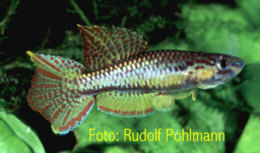
Dizangue
- C89 / 33.
Photo courtesy of Rudolf Pohlmann.
|

Dizangue
- C89 / 33. Female
Photo courtesy of Rudolf Pohlmann.
|
|
Ekondo Titi -
|

Ekondo Titi
Photo courtesy of Rudolf Pohlmann.
|

Ekondo Titi
Photo courtesy of Rudolf Pohlmann.
|
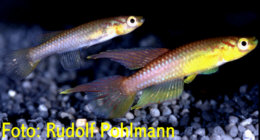
Ekondo Titi
Photo courtesy of Rudolf Pohlmann.
|
|
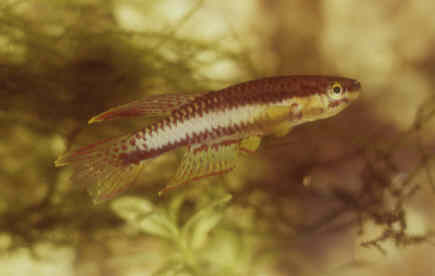
Ekondo Titi
|
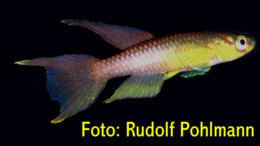
Ekondo Titi
Photo courtesy of Rudolf Pohlmann.
|
|
Kopongo -
|
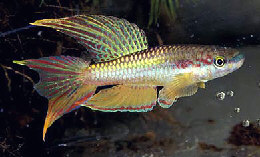
Kopongo
Photo courtesy of Günther
Schmaus.
|
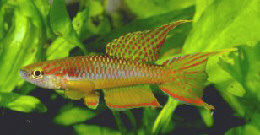
Kopongo
Photo courtesy of Maurice Chauche & the
KCF website.
|
|
Kumba -
|
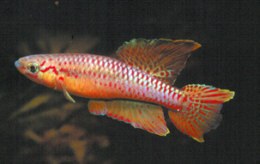
Kumba.
Male from first import into the USA around 1974-75.
Photo courtesy of Tony Terceira
|
|
|
Likoko - Sometimes distributed
under the corrupted name of Lykoko.
|

Likoko
- Wild fish.
Photo courtesy of Rudolf Pohlmann.
|

Likoko
- collected in 1999. These are F1.
Photo courtesy of Rudolf Pohlmann.
|
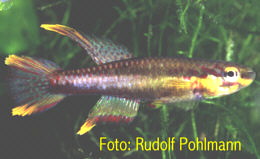
Likoko
- SE 21 / 99
Photo courtesy of Rudolf Pohlmann.
|
|

Likoko
- SE 21 / 99
Photo courtesy of Rudolf Pohlmann.
|
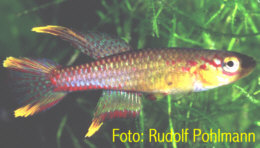
Likoko
- SE 21 / 99
Photo courtesy of Rudolf Pohlmann.
|
|
Mambanda - This location
spelling may be a corruption. Could this be Mabanda? If so this location
is to the east of Kumba on the N16.
|
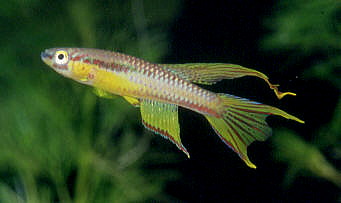
Mambanda.
Photo courtesy of Ed Pürzl.
|
|
|
Mbonge -
|

Mbonge CDC
Camp collected in 2000.
Photo courtesy of Rudolf Pohlmann.
|
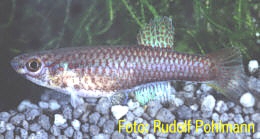
Mbonge CDC
Camp female collected in 2000.
Photo courtesy of Rudolf Pohlmann.
|

Mbonge CDC
Camp female collected in 2000.
Photo courtesy of Rudolf Pohlmann.
|
|
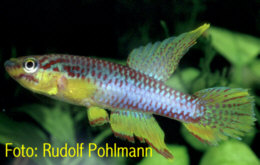
Mbonge CDC
Camp collected in 2000.
Photo courtesy of Rudolf Pohlmann.
|
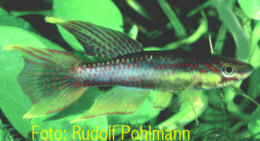
Mbonge CDC
Camp collected in 2000.
Photo courtesy of Rudolf Pohlmann.
|
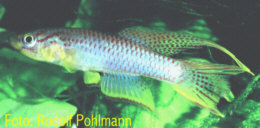
Mbonge
Photo courtesy of Rudolf Pohlmann.
|
|
|

Mbonge
|
|
Meme -
|

Meme River.
Photo courtesy of Ed Pürzl
|
|
|
Moliwe -
|
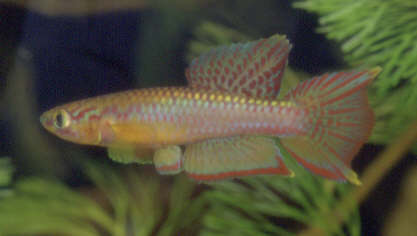
Moliwe.
Photo courtesy of Ed Pürzl
|
|
|
Muyuka -
|
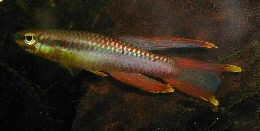
Muyuka Police Station
C89-15
Photo courtesy of Joseph S.
|

Muyuka Police Station
C89-15 female
Photo courtesy of Joseph S.
|
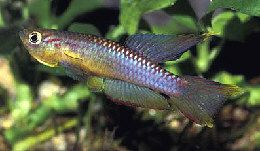
Muyuka C89 / 15
Photo courtesy of Günther
Schmaus.
|
|
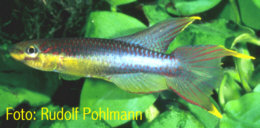
Muyuka Police
Station - C89 / 15
Photo courtesy of Rudolf Pohlmann.
|
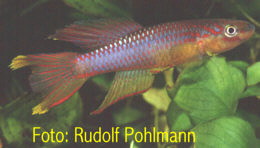
Muyuka Police
Station - C89 / 15
Photo courtesy of Rudolf Pohlmann.
|
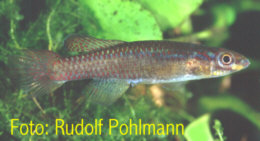
Muyuka Police
Station - C89 / 15. Female.
Photo courtesy of Rudolf Pohlmann.
|
Nkapa -
|

Nkapa
- Wild male imported into the AKA.
Photo courtesy of Tony Terceira
|
|
|
Oron -
|
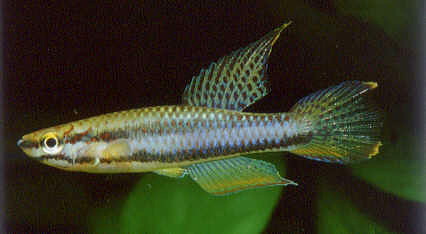
Oron.
Wild male. Photo courtesy of
Ed Pürzl.
|
|
|
Owé -
|
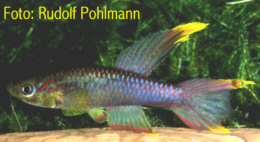
Owé-
Wild fish.
Photo courtesy of Rudolf Pohlmann.
|
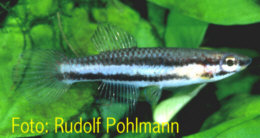
Owé-
Wild female.
Photo courtesy of Rudolf Pohlmann.
|

Owé-
Wild fish.
Photo courtesy of Rudolf Pohlmann.
|
|

Owé-
Wild female.
Photo courtesy of Rudolf Pohlmann.
|

Likoko
& Owé-
Wild fish.
Photo courtesy of Rudolf Pohlmann.
|
|
Sole -
|
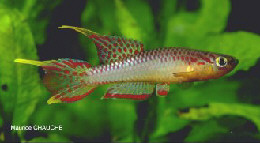
CCMP 85 / 3 - Sole
Photo courtesy of Maurice Chauche & the
KCF website.
|
|
|
Tiko -
|
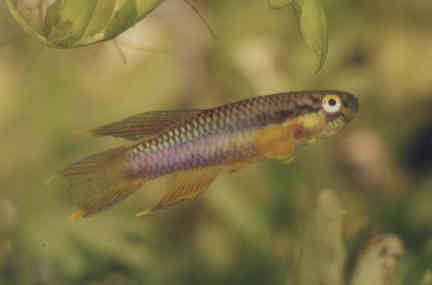
Tiko
|
|
|
K codes. Penda Mboko (location K6) is
perhaps the most distributed. K5 has also been written up. The 'K' stands for
Kamp (or camp). Collected by German aquarists in 2001.
Penda Mboko is situated
southeast of Muyuka.
Six camps are situated on the National CDC rubber plantation.
A.sp.aff.splendopleure
Kopongo 1. http://home8.swipnet.se/%7Ew-86183/kopongo1.htm
Alf & Anitas site.
| spp
01 | Moliwe
GPE 90 / 5 | | spp
02 | CMM
52 Y ( Molive ) | |
spp 03 |
Tiko | |
spp 04 |
Bamukong Ombe - Y River system 1999 |
| spp
05 | Bombe
CXC Y 23 | | spp
06 | CMM
50 | | spp
07 | Kumba
GPE 90 / 3 | | spp
08 | Ngola
HAH 98 YY | Collection
codes for A. cf. splendopleure
|
cf. spp 01 |
Ohne | |
cf. spp 02 |
Bolbitis |
| cf.
spp 03 | Titelbild |
| cf.
spp 04 | DDR
Strain | | cf.
spp 05 | Ekondo
Titi | | cf.
spp 06 | Mambanda |
| cf.
spp 07 | Mbonge |
| cf.
spp 08 | Muyuka
Police Station C 89 / 15 | |
cf. spp 09 |
Lykoko 1999 |
| cf.
spp 010 | Owe
1999 | | cf.
spp 011 | Mbonge
CDC Camp 4 / 2000 | Collection
Codes for A. sp. aff. splendopleure
| sp.
aff. spp 01 | Dizangue
1 C 89 / 33 | |
sp.
aff. spp 02 |
Mangoule 1999
| | sp.
aff. spp 03 |
Kopongo 1 C 89
/ 35 | | sp.
aff. spp 04 |
Kopongo 11 C 89
/ 36 | | sp.
aff. spp 05 |
CMM 7 Y (Kopongo
type) | | sp.
aff. spp 06 |
CMM 8 (Dizangue
type) | |
| Type
Locality |
The
original description by Brünning did not give a type locality. Meinken, in
his re-description of 1930 gives the type locality as Tiko, western Cameroon. |
| Distribution |
Extends from the extreme southeastern area of Nigeria
through western & southwestern Cameroon, Equatorial Guinea to northwestern
Gabon. North of the Sanaga River A.riggenbachi
replaces this species. To the south they are replaced by A.loennbergii. Fish
collected in the Koupongo area are regarded by Amiet 1987 to be highly coloured
in the anal fin which is opaque orange with lateral bands 'fleeting & not
very dark'. |
| Habitat |
Coastal rainforest brooks & small streams where they
can be found in quiet areas on soils derived from Tertiary & Quarternary sedimentary
deposits. Scheel (ROTOW 1) describes the Tiko
location as 'rather hard, alkaline water'. |
| Distinguishing
Characteristics |
The
anal fin has no spots. However those populations from northern Gabon do
exhibit spots but Amiet 1987 considered there affinities uncertain. |
| Colour/Pattern
Variability |
High |
| History |
Brünning based his original description on a colour
description & figure. In 1930 Meinken re-described the species from one male
& one female (from Griem's 1929 collection) in the magazine 'Wochenshrift'
which were reportedly collected at Tiko by Griem. In
the '30's they were distributed under the A.bivittatum
name They were distributed in Germany &
the USA in the early 1950's as Aphyosemion multicolor
but they were considered to have survived World War II & were regarded as
the most commonly found killie after the war. Scheel
considered Tiko (collected in the 1930's) to be still present, although rare,
in aquaria in 1968. Scheel collected the sp.
from Tiko in 1966 & 1974. Radda (in 1971) collected them near Tiko. |
| Breeding
Notes |
Regarded as a fairly difficult species to breed.
Eggs can be sensitive. Water incubation takes around 10-12 days. Growth
rate is quite rapid although sexual maturity is reportedly not attained
until they reach 6-7 months of age.
Oliver Legros in BKA newsletter No.328, January
1993 states that this species is prolific & does well left as a
natural method with not too many adults in the tank. Eggs reported as
hatching in 15 - 20 days. Longitudinal banding starts to appear after
2½ months. At 3 months males start showing with a luminous light
blue reflection on the anal fin. Some populations show through as a
yellow reflection (Kopongo). Growth at this point slows with spawning
starting around 6 months.
|
| Diameter
of Egg |
1.3
mm. |
| Remarks |
Males have been known to fight amongst each other
to the point where fin damage occurs.
Legros in BKA newsletter 328 reports that 'males
can live together in large numbers without any sign of aggression'.
|
